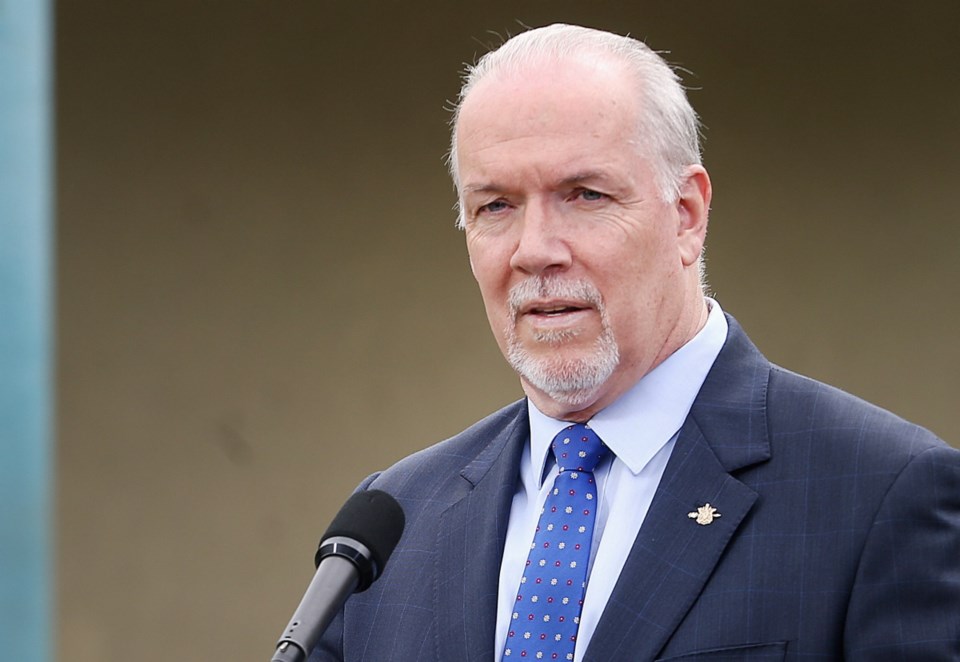Premier John Horgan served notice last week that the usual after-action report on the wildfire season is going to be a little different this time around. “We need to make sure that we don’t just do another review. We need a call to action,” he told delegates to the Union of B.C. Municipalities.
“This is not another review, this is an appeal for your ideas.”
He rejected re-doing what’s been done in the past, “because it’s just not good enough.”
All this is from a premier who has just endured his first provincial emergency and got an extended behind-the-scenes close look at how bad it can get.
There’s one aspect of the 2018 fire season that will likely stir the same appetite in the public for a dramatically new approach to fighting them.
It was the smoke. Day after day of choking smoke and urgent air-quality warnings in a significant number of communities.
Various metrics are used to measure fires and compare one year with another. Area covered, number of fires, cost of losses and cost of firefighting are all in the mix.
This year’s numbers aren’t final yet, but the prevalence of the smoke seems sure to be far higher than any previous years. The 2017 season, one of the worst ever by all the usual measurements, featured terrible smoke in several communities. Places like Kamloops marked the worst air quality ever as the thick haze locked into the valley and closed around the city.
This year, the area burned — so far — is on par with last year, but the smoke blanket seemed much more widespread, trapping Metro Â鶹´«Ă˝Ół»and Victoria for days. When it envelops the coast, you know it’s far worse in the Interior.
Another reason the premier isn’t keen on doing just another review is that B.C. just finished one. As Horgan said, the ink was barely dry this spring on an independent review of the 2017 fire season when the 2018 one blazed to life. That one was done by former Liberal cabinet minister George Abbott and hereditary chief Maureen Chapman. It has dozens of recommendations and if the government is keen to hear some radically different ideas, there’s one in that report that fits the bill.
It advocates “greater use of prescribed burning to achieve fuel mitigation at both the interface and landscape levels.” The recommendation is understated. Reading between the lines, it’s calling for prescribed burning on a huge scale, far higher than ever used previously in B.C.
Abbott and Chapman’s report called prescribed burns one of the core questions the government has to decide when looking at its wildfire strategy. “Should prescribed burns be more extensively utilized at both the interface and landscape levels with the goal of slowing down, diverting, or controlling potential future wildfires?”
After posing the question, they come down solidly on the yes side.
The most obvious concerns are deliberately adding to the smoke blanket and increasing greenhouse gas emissions. But the report said prescribed burns “will never produce carbon emissions comparable to those produced by that wildfire.”
Advocates say if they’re started under the right conditions, they burn less intensely, consume less fuel and release less smoke. The estimate of emissions from the 2017 fire season is astonishing — 190 million tonnes, almost three times B.C.’s annual carbon footprint.
If this year’s is comparable, B.C. will have tripled it’s annual emissions for two years in a row, even while it puts together a climate-change strategy.
The report provides some political cover for what would be a controversial idea, noting that Indigenous people used prescribed burns for millennia.
What sets the stage for prescribed burns is the enormity of the problem created by the combustible fuel on the forest floor.
If the premier wants different, affordable ideas on fire-proofing the forest more effectively, the answer is at hand. It would just take a lot of determination to get it started.



